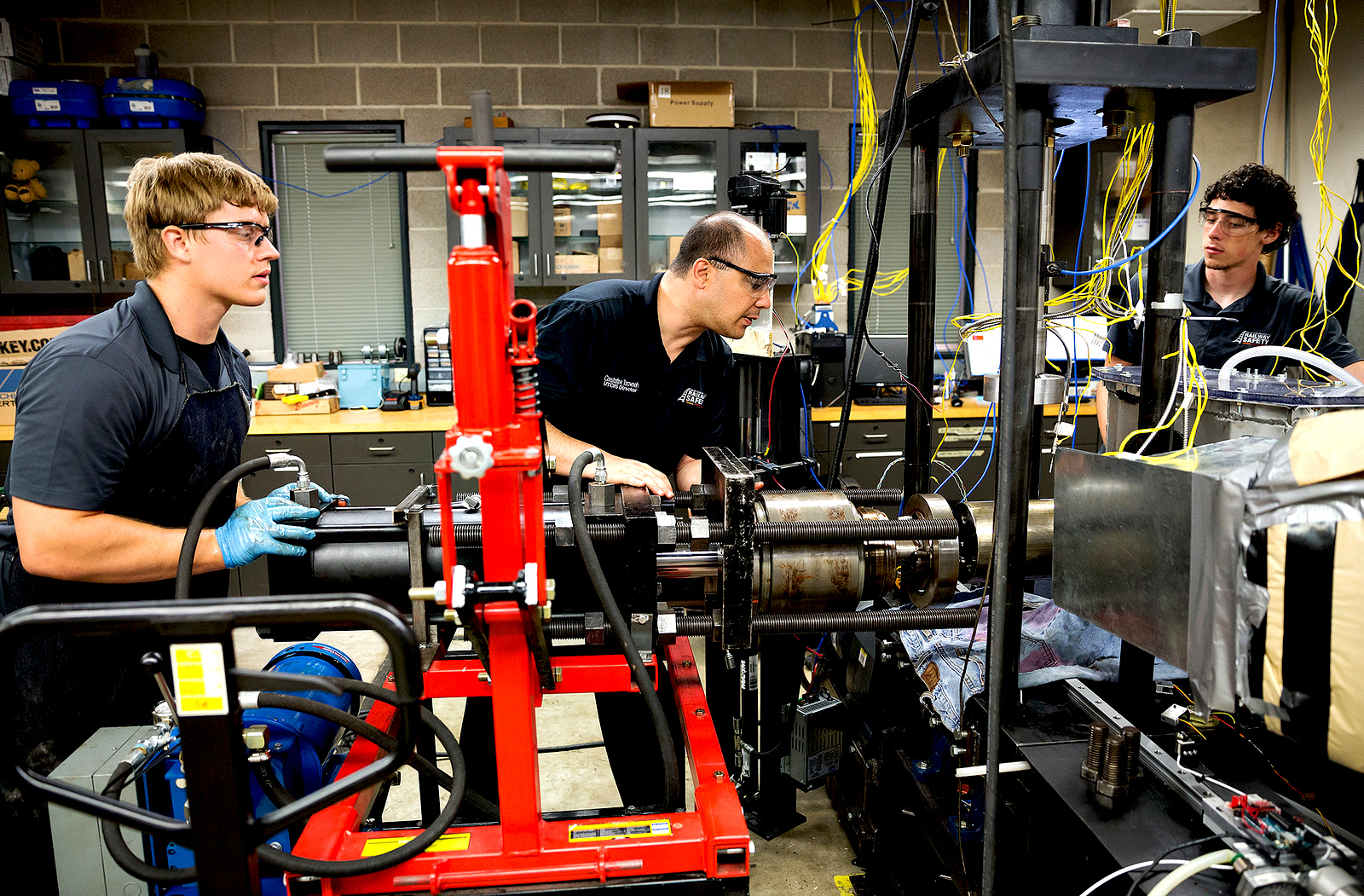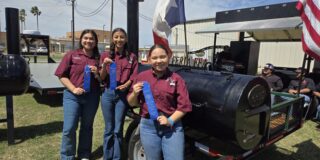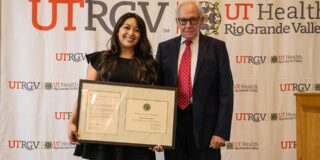- La Feria Native Soon To Retire From The Military This Summer
- Senior Eneece Avila Takes Pride in her State Title
- Dr. Noemi Infante, Harlingen Medical Center Open New Women’s Clinic
- Santa Rosa Cameron County Park Partially Reopens
- Santa Rosa Takes to Regionals Meet in Kingsville, Tx
- Long-Standing Nexstar Tower in La Feria Decommissioned
- Lionettes Powerlifting Meet
- Local Business Holds Event to Benefit RGV Shriners Club
- Knights of Columbus Holds it’s 30th Annual Golf Tournament
- KGBT Tower Dismantled
UTRGV Railway Safety Students Stay on Track for Engineering Careers
- Updated: July 15, 2016
by Cheryl Taylor
RIO GRANDE VALLEY, TEXAS – Under the direction of Dr. Constantine Tarawneh – mechanical engineering professor and Bentsen Fellow at UTRGV and recently named associate dean for Research – the University Transportation Center for Railway Safety (UTCRS) focuses on rail safety research, education, technology transfer and implementation, and workforce development.
“As one of only two centers in the nation focusing on railway research and the only one that is a lead as a minority institution, UTRGV’s UTCRS is in a solid position to compete for an $8 million U.S. Department of Transportation grant to renew our center and continue the excellent work of the UTCRS for five more years,” said Tarawneh, who has been building the railway safety initiative for more than a decade.
The center’s creation stemmed from research at The University of Texas Pan American, a UTRGV legacy institution, under Tarawneh’s direction.
Those who know Tarawneh say the energy he brings to the initiative is comparable to a fully loaded freight train at top speed. He started about 10 years ago with a $15,000 grant fromAmsted Rail to test railway bearings and sensors to determine ways to make them safer and more reliable. Now, the center is operating under a three-year, $4.2 million grant by the U.S. Department of Transportation (DOT) received in 2013.
“Of the 35 transportation centers in the United States, the center at UTRGV is one of only two that focuses exclusively on railway research,” Tarawneh said. “The other center that focuses on railway research is the one led by the University of Illinois at Urbana-Champaign.”
Of the six FAST Act (Fixing America’s Surface Transportation Act, signed into law on Dec. 4, 2015) research priorities identified by the U.S. DOT 2016 UTC Program competition, the one the UTRGV center focuses on is category four: improving the durability and extending the life of transportation infrastructure.

UTRGV student Ryan Lechtenberg, Dr. Constantine Tarawneh and graduate student Dylan Blackwell align a bearing installer, at the Engineering building on the Edinburg Campus. Tarawneh, a mechanical engineering professor and Bentsen Fellow at UTRGV, is director of the University Transportation Center for Railway Safety (UTCRS) and recently was named associate dean for Research. (UTRGV Photo by Paul Chouy)
“Ten UTRGV faculty contribute to the UTCRS, working with six graduate assistants and 16 undergraduate students who get invaluable research experience,” Tarawneh said. “Not only are we researching safety, the center is expediting and meeting the industry’s needs by participating in workforce development in transportation.”
The UTCRS laboratories, located in the College of Engineering and Computer Science Hi-Bay area of the Engineering Building on the Edinburg Campus, feature a one-of-a-kind, single-bearing test rig with vertical, lateral and impact load capabilities that can closely mimic the operating conditions that railroad bearings experience in service. The lab also features other bearing testers, dedicated for service-life testing and performance characterization of all classes of railroad bearings.
A unique component of the transportation center at UTRGV is the alliance that has been formed with Texas A&M Transportation Institute (TTI) and two community colleges – South Texas College in the Rio Grande Valley and Houston Community College in Houston.
“We have reached out to these schools to assist their students with a strong bridge to an engineering program,” Tarawneh said. “With the research experience these students receive through this collaboration, we are closing the gap, helping them make a smooth transition to a four-year university.”
One of U.S. DOT’s UTC Program goals is to entice two-year college students to continue to four-year degrees by preparing them with hands-on research experience with upper-level students, helping them with financial aid, and mentoring.
Tarawneh said UTCRS-UTRGV Engineering hopes to create a transportation engineering pipeline for students starting as early as K-12 and leading to two-year community colleges, four-year colleges, and postgraduate programs at Tier 1 research institutions.
But reaching college students is not enough to increase awareness of careers in transportation engineering, Tarawneh said. With that in mind, the UTCRS has organized three of the largest transportation-related summer camps in the nation for students from third grade to 12th grade.
Students are selected to participate in the railway safety summer camps by their home school districts.
“Children’s imaginations are channeled and expanded through hands-on, creative activities,” Tarawneh said. “When children participate in designing and building, they are more likely to follow their interests in engineering and technology through high school and beyond.”
Summer railway safety camps are offered at UTRGV at no charge, as a part of the grant. Last summer, elementary school students designed and built a magnetic levitation train system. Middle school students built and programmed vehicular robots designed to obey traffic lights and railway safety signs and signals. And high school students designed and programmed an efficient vehicular robot for competition.
Tarawneh wants to expand existing collaboration with K-16 schools in the Rio Grande Valley by infusing the program into the schools all year long by training teachers.
“We can reach only so many youngsters ourselves, but by training educators, we can multiply the number of K-12 students to get involved in engineering,” he said. “Part of our grant is to provide a summer stipend to teachers who participate in training and are committed to taking that knowledge back to their classrooms.”
Although the summer months pass quickly with K-12 camps and university students continuing their research, Tarawneh said he will remain in a state of anticipation until the grant awardees are announced.
“Most of the research-intensive schools are changing their strategies to compete with us, and that is to our favor,” he said. “And with our recent partnering with two of the largest community colleges in the nation with STC and HCC, we have hopefully positioned ourselves favorably to compete with 276 proposals to bring $8 million to UTRGV over the next five years.”






